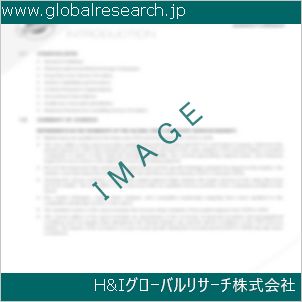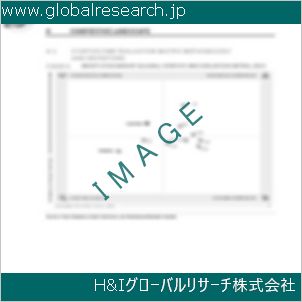Table of Contents
1 Industry Overview of Isobornyl acrylate
1.1 Definition and Specifications of Isobornyl acrylate
1.1.1 Definition of Isobornyl acrylate
1.1.2 Specifications of Isobornyl acrylate
1.2 Classification of Isobornyl acrylate
1.3 Applications of Isobornyl acrylate
1.3.1 Nuclear Application
1.3.2 Non-Nuclear Application
1.4 Industry Chain Structure of Isobornyl acrylate
1.5 Industry Overview and Major Regions Status of Isobornyl acrylate
1.5.1 Industry Overview of Isobornyl acrylate
1.5.2 Global Major Regions Status of Isobornyl acrylate
1.6 Industry Policy Analysis of Isobornyl acrylate
1.7 Industry News Analysis of Isobornyl acrylate
2 Manufacturing Cost Structure Analysis of Isobornyl acrylate
2.1 Raw Material Suppliers and Price Analysis of Isobornyl acrylate
2.2 Equipment Suppliers and Price Analysis of Isobornyl acrylate
2.3 Labor Cost Analysis of Isobornyl acrylate
2.4 Other Costs Analysis of Isobornyl acrylate
2.5 Manufacturing Cost Structure Analysis of Isobornyl acrylate
2.6 Manufacturing Process Analysis of Isobornyl acrylate
3 Technical Data and Manufacturing Plants Analysis of Isobornyl acrylate
3.1 Capacity and Commercial Production Date of Global Isobornyl acrylate Major Manufacturers in 2023
3.2 Manufacturing Plants Distribution of Global Isobornyl acrylate Major Manufacturers in 2023
3.3 R&D Status and Technology Source of Global Isobornyl acrylate Major Manufacturers in 2023
3.4 Raw Materials Sources Analysis of Global Isobornyl acrylate Major Manufacturers in 2023
4 Capacity, Production and Revenue Analysis of Isobornyl acrylate by Regions, Types and Manufacturers
4.1 Global Capacity, Production and Revenue of Isobornyl acrylate by Regions 2019-2024
4.2 Global and Major Regions Capacity, Production, Revenue and Growth Rate of Isobornyl acrylate 2019-2024
4.3 Global Capacity, Production and Revenue of Isobornyl acrylate by Types 2019-2024
4.4 Global Capacity, Production and Revenue of Isobornyl acrylate by Manufacturers 2019-2024
5 Price, Cost, Gross and Gross Margin Analysis of Isobornyl acrylate by Regions, Types and Manufacturers
5.1 Price, Cost, Gross and Gross Margin Analysis of Isobornyl acrylate by Regions 2019-2024
5.2 Price, Cost, Gross and Gross Margin Analysis of Isobornyl acrylate by Types 2019-2024
5.3 Price, Cost, Gross and Gross Margin Analysis of Isobornyl acrylate by Manufacturers 2019-2024
6 Consumption Volume, Consumption Value and Sale Price Analysis of Isobornyl acrylate by Regions, Types and Applications
6.1 Global Consumption Volume and Consumption Value of Isobornyl acrylate by Regions 2019-2024
6.2 Global and Major Regions Consumption Volume, Consumption Value and Growth Rate of Isobornyl acrylate 2019-2024
6.3 Global Consumption Volume and Consumption Value of Isobornyl acrylate by Types 2019-2024
6.4 Global Consumption Volume and Consumption Value of Isobornyl acrylate by Applications 2019-2024
6.5 Sale Price of Isobornyl acrylate by Regions 2019-2024
6.6 Sale Price of Isobornyl acrylate by Types 2019-2024
6.7 Sale Price of Isobornyl acrylate by Applications 2019-2024
6.8 Market Share Analysis of Isobornyl acrylate by Different Sale Price Levels
7 Supply, Import, Export and Consumption Analysis of Isobornyl acrylate
7.1 Supply, Consumption and Gap of Isobornyl acrylate 2019-2024
7.2 Global Capacity, Production, Price, Cost, Revenue, Supply, Import, Export and Consumption of Isobornyl acrylate 2019-2024
7.3 USA Capacity, Production, Price, Cost, Revenue, Supply, Import, Export and Consumption of Isobornyl acrylate 2019-2024
7.4 EU Capacity, Production, Price, Cost, Revenue, Supply, Import, Export and Consumption of Isobornyl acrylate 2019-2024
7.5 China Capacity, Production, Price, Cost, Revenue, Supply, Import, Export and Consumption of Isobornyl acrylate 2019-2024
7.6 Japan Capacity, Production, Price, Cost, Revenue, Supply, Import, Export and Consumption of Isobornyl acrylate 2019-2024
8 Major Manufacturers Analysis of Isobornyl acrylate
8.1 Manufacturer One
8.1.1 Company Profile
8.1.2 Product Picture and Specifications
8.1.2.1 Type I
8.1.2.2 Type II
8.1.2.3 Type III
8.1.3 Capacity, Production, Price, Cost, Gross and Revenue
8.1.4 Contact Information
8.2 Manufacturer Two
8.2.1 Company Profile
8.2.2 Product Picture and Specifications
8.2.2.1 Type I
8.2.2.2 Type II
8.2.2.3 Type III
8.2.3 Capacity, Production, Price, Cost, Gross and Revenue
8.2.4 Contact Information
8.3 Manufacturer Three
8.3.1 Company Profile
8.3.2 Product Picture and Specifications
8.3.2.1 Type I
8.3.2.2 Type II
8.3.2.3 Type III
8.3.3 Capacity, Production, Price, Cost, Gross and Revenue
8.3.4 Contact Information
8.4 Manufacturer Four
8.4.1 Company Profile
8.4.2 Product Picture and Specifications
8.4.2.1 Type I
8.4.2.2 Type II
8.4.2.3 Type III
8.4.3 Capacity, Production, Price, Cost, Gross and Revenue
8.4.4 Contact Information
8.5 Manufacturer Five
8.5.1 Company Profile
8.5.2 Product Picture and Specifications
8.5.2.1 Type I
8.5.2.2 Type II
8.5.2.3 Type III
8.5.3 Capacity, Production, Price, Cost, Gross and Revenue
8.5.4 Contact Information
…
9 Marketing Trader or Distributor Analysis of Isobornyl acrylate
9.1 Marketing Channels Status of Isobornyl acrylate
9.2 Traders or Distributors with Contact Information of Isobornyl acrylate by Regions
9.3 Ex-work Price, Channel Price and End Buyer Price Analysis of Isobornyl acrylate
9.4 Regional Import, Export and Trade Analysis of Isobornyl acrylate
10 Industry Chain Analysis of Isobornyl acrylate
10.1 Upstream Major Raw Materials Suppliers Analysis of Isobornyl acrylate
10.1.1 Major Raw Materials Suppliers with Contact Information Analysis of Isobornyl acrylate
10.1.2 Major Raw Materials Suppliers with Supply Volume Analysis of Isobornyl acrylate by Regions
10.2 Upstream Major Equipment Suppliers Analysis of Isobornyl acrylate
10.2.1 Major Equipment Suppliers with Contact Information Analysis of Isobornyl acrylate
10.2.2 Major Equipment Suppliers with Product Pictures Analysis of Isobornyl acrylate by Regions
10.3 Downstream Major Consumers Analysis of Isobornyl acrylate
10.3.1 Major Consumers with Contact Information Analysis of Isobornyl acrylate
10.3.2 Major Consumers with Consumption Volume Analysis of Isobornyl acrylate by Regions
10.4 Supply Chain Relationship Analysis of Isobornyl acrylate
11 Development Trend of Analysis of Isobornyl acrylate
11.1 Capacity, Production and Revenue Forecast of Isobornyl acrylate by Regions and Types
11.1.1 Global Capacity, Production and Revenue of Isobornyl acrylate by Regions 2024-2029
11.1.2 Global and Major Regions Capacity, Production, Revenue and Growth Rate of Isobornyl acrylate 2024-2029
11.1.3 Global Capacity, Production and Revenue of Isobornyl acrylate by Types 2024-2029
11.2 Consumption Volume and Consumption Value Forecast of Isobornyl acrylate by Regions, Types and Applications
11.2.1 Global Consumption Volume and Consumption Value of Isobornyl acrylate by Regions 2024-2029
11.2.2 Global and Major Regions Consumption Volume, Consumption Value and Growth Rate of Isobornyl acrylate 2024-2029
11.2.3 Global Consumption Volume and Consumption Value of Isobornyl acrylate by Types 2024-2029
11.2.4 Global Consumption Volume and Consumption Value of Isobornyl acrylate by Applications 2024-2029
11.3 Supply, Import, Export and Consumption Forecast of Isobornyl acrylate
11.3.1 Supply, Consumption and Gap of Isobornyl acrylate 2024-2029
11.3.2 Global Capacity, Production, Price, Cost, Revenue, Supply, Import, Export and Consumption of Isobornyl acrylate 2024-2029
11.3.3 USA Capacity, Production, Price, Cost, Revenue, Supply, Import, Export and Consumption of Isobornyl acrylate 2024-2029
11.3.4 EU Capacity, Production, Price, Cost, Revenue, Supply, Import, Export and Consumption of Isobornyl acrylate 2024-2029
11.3.5 China Capacity, Production, Price, Cost, Revenue, Supply, Import, Export and Consumption of Isobornyl acrylate 2024-2029
11.3.6 Japan Capacity, Production, Price, Cost, Revenue, Supply, Import, Export and Consumption of Isobornyl acrylate 2024-2029
12 New Project Investment Feasibility Analysis of Isobornyl acrylate
12.1 New Project SWOT Analysis of Isobornyl acrylate
12.2 New Project Investment Feasibility Analysis of Isobornyl acrylate
13 Conclusion of the Global Isobornyl acrylate (CAS 5888-33-5) Industry 2024 Market Research Report
| ※参考情報 イソボルニルアクリレートは、化学の分野で注目されている重要な化合物の一つです。CAS番号5888-33-5として登録されており、主に工業分野で使用されています。この化合物は、アクリル酸エステルの一種であり、特にその特異な構造と特性から、多様な用途があります。 イソボルニルアクリレートの基本的な定義としては、イソボルニルという分子がアクリレートと結合したもので、化学式はC15H24O2です。この化合物は、無色の液体として存在し、アクリル酸の特性を持ちながらも、特有の官能基が追加されていることによって、さまざまな優れた特徴を持っています。これにより、クロスリンキング(架橋反応)の性能が向上し、耐久性や弾力性のある高品質なポリマー材料を得ることができます。 イソボルニルアクリレートの特徴としては、まず優れた光学的性質を挙げることができます。紫外線に対する耐性があり、長期間にわたって安定な性質を保つことができるため、特に coatings(コーティング)や adhesives(接着剤)としての利用が広がっています。また、その適度な流動性は加工や塗布の際に便利で、使用者にとって扱いやすい材料です。 さらに、イソボルニルアクリレートは、低い揮発性を持ち、環境負荷が少ないというメリットもあります。製品に使用される際、揮発性有機化合物(VOC)の排出が抑えられ、より環境に配慮した製品開発に寄与しています。このような性質から、イソボルニルアクリレートは、エコフレンドリーな選択肢としても評価されています。 この化合物は、主に工業用途で使用されます。具体的には、コーティング剤、接着剤、インク、および複合材料などに用いられています。特に、イソボルニルアクリレートを含むポリマーは、強度や弾力性、耐薬品性、耐熱性に優れているため、自動車や電子機器、建材など、さまざまな分野での応用が期待されています。また、医療分野でも、その特性を活かしたバイオマテリアルの開発が進められています。 関連技術に関しては、ポリマー化学の領域でイソボルニルアクリレートを用いることが一般的です。アクリレートの重合反応は、ラジカル重合や付加反応により進行し、ここで得られるポリマーは高い性能を示します。また、紫外線硬化技術との組み合わせにより、迅速な固化が可能であり、この特徴は製造プロセスの効率化に寄与します。これにより、イソボルニルアクリレートを利用した製品の生産時間が短縮され、コスト削減にもつながっています。 最近では、ナノテクノロジーを活用した複合材料の研究も進んでおり、イソボルニルアクリレートを基にしたナノ複合素材が注目されています。これにより、より高い性能や新しい機能を持つ材料の開発が可能になり、産業界においてますます重要な存在となっています。 イソボルニルアクリレートは、その特異な特性から、多方面での利用が期待されます。ただし、その安全性や環境への影響についても引き続き研究が必要です。例えば、加工過程での取り扱いや廃棄時における環境への配慮が求められます。今後の材料科学の発展に伴い、より安全で持続可能な形での利用が進むことが望まれています。 このように、イソボルニルアクリレートは、化学的な特性、環境への配慮、加工のしやすさなど、多岐にわたる利点を持つ化合物として、今後も様々な分野での応用が模索され続けることでしょう。新しい技術や材料の開発が進む中で、イソボルニルアクリレートの持つ可能性はますます広がっていくと期待されます。 |
❖ 免責事項 ❖
http://www.globalresearch.jp/disclaimer












